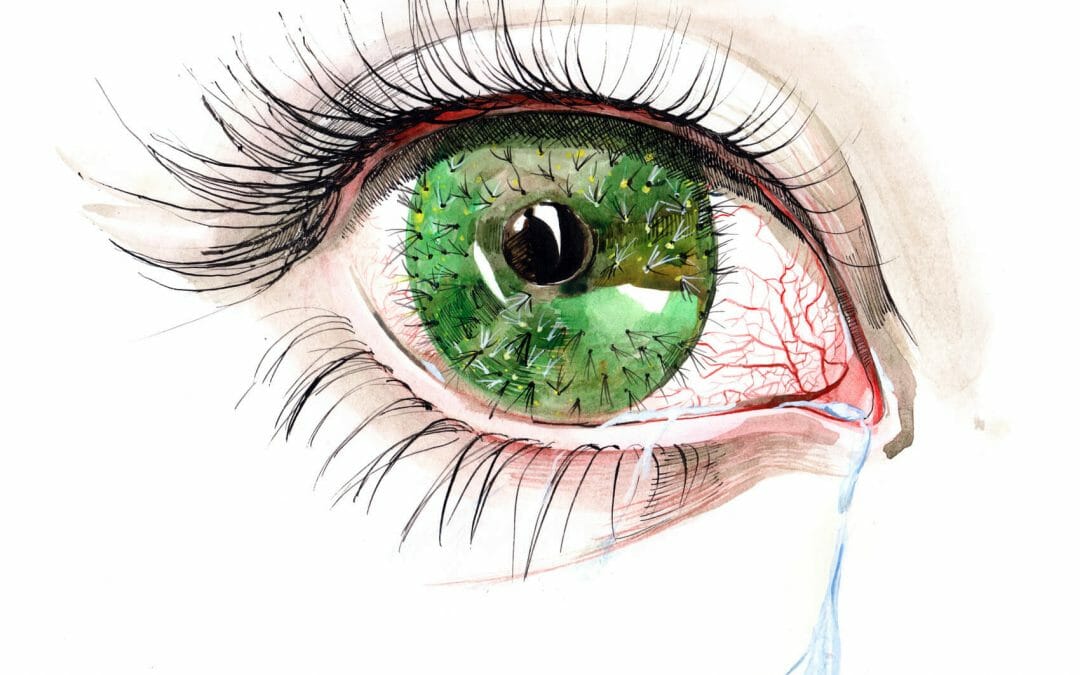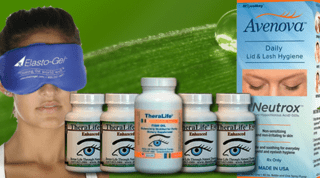Watery eyes medical term
Do you have watery eyes -tears dripping from my eyes?
Do you have dry eyes?
Eventually, you may experience epiphoresis.
Epiphore, watery eye, is a common eye problems especially among the elderly.
Uncontrolled tearing or watery eyes can impact your well-being and daily life.
Some emotions are so affecting to our eyes that they water.
Spending too much time with computers can cause more tears as well.
During eye movements the eye also makes an automatic tear, which happens a lot if dust is stuck on the eye surface, smoke and dust particles. This is normal.
Watery eyes means you have too many tears draining from the eyes.
Your eyes produce tears constantly to help moisten each eye and wash out any foreign particles or foreign objects.
When you blink, tears spread and keep your eyes moist.
Other glands produce oils that keep tears from evaporating too fast or from spilling out of your eyes.
Watery eyes causes
The accessory lacrimal glands on the back of the upper and lower eyelids produce tears that moisten the eyes throughout the day.
Tears are normally discharged through your tear ducts and then evaporate.
When you over produce, they overwhelm your tear ducts, and you develop watery eyes.
Watery eyes can also happen when eyes produce too many tears and have a problem draining.
This condition is also known as epiphora.
Your eyes are always making tears – they leave the eye through a small hole in the corner of the eye called the tear duct.
Causes of watery eyes include:
- Allergy to mold, dander, dust
- Blepharitis (swelling along the edge of the eyelid)
- Foreign object in your eye.
- Stye or chalazion- painful lump near the edge of your eyelid.
- Blocked ducts
- Conjunctivitis eye infections
- Smog
- chemicals in the air or wind
- Bright light
- Eyelid turning inward or outward
- Something in the eye (such as dust or sand)
- Scrape on the eye infection.
- Inward-growing eyelashes
- Ingrown eyelash (trichiasis)
- Irritation
- Eye strain
- Laughing
- Vomiting
- Yawning
Dry eyes
You might have this problem because your body doesn’t make enough tears, because they dry up too fast ( blocked oil glands), or they don’t have the right balance of water, oils, and mucus.
You have blurred vision, red, dry, itchy eyes?
Lots of things can cause those issues, from windy days to medical conditions.
Whatever the cause, your eyes react by over producing.
Pinkeye (Conjunctivitis)
Pinkeye is a common cause of watery eyes for both children and adults.
It can make one or both of the eyes look pink or red and feel itchy and gritty, like there’s sand in them.
Infections with bacteria or viruses are the most common cause.
Allergies or Viral infections
Watery, itchy eyes often come with a cough, runny nose, and other classic allergy symptoms.
Treat with allergy medicines, and avoiding your triggers — like pollen, mold, or pet dander — can help.
Colds
While colds can cause watery eyes, too, they won’t make them itch. That’s one way to tell colds and allergies apart.
Watery eyes in infants
Watery eyes can be due to many factors and conditions. In infants, persistent watery eyes, often with some matter, are commonly the result of blocked tear duct.
Environment
It’s normal for your eyes to water in smoky environments, dusty weather or if you’re outside in the cold or wind.
An injury to the eye or foreign object in your eye, such as an eyelash or a piece of grit, can also make your eyes water.
Sometimes watering eyes can be caused by: an allergy or infection ( conjunctivitis ) blocked tear ducts (the small tubes that tears drain into) your eyelid drooping away from the eye (ectropion) or other eyelid problems dry eye syndrome – this can make your eyes to have tear over production.
Blocked tear duct
Normally, tears flow out of the tear glands above your eye, spread across the surface of your eyeball, and drain into ducts in the corner.
But if the ducts get clogged, the tears build up and your eye gets watery.
An infection or inflammation in the lacrimal or tear glands can cause swelling and excess tearing.
Entropion/Ectropion
Inward turning of the lower eyelid against the eyeball – growing eyelash can rub against the eye, a problem called entropion.
Or they sag outward, called ectropion, so the lids can’t wipe the whole eye when you blink.
Either one can trigger watery eyes.
Cornea abrasion
Corneal abrasion – contact lenses can scratch the outside of your eyeball, called the cornea.
Chemicals
Over-production of tears Irritated eyes may produce more tears than normal as the body tries to rinse the irritant away.
The following irritants can cause the over-production of tears in one or both eyes:
- some chemicals, such as those in fumes and even onions
- infective conjunctivitis
- pink eye allergic conjunctivitis injury to the eye
- Cornea abrasion
- Chemotherapy drugs
Other diseases
Chronic sinusitis Granulomatosis with polyangiitis (Wegener’s granulomatosis) Inflammatory diseases Radiation therapy Rheumatoid arthritis (inflammatory joint disease) Sarcoidosis (collections of inflammatory cells in the body) Sjogren’s syndrome Stevens-Johnson syndrome Surgery of the eye or nose Tumors affecting the tear drainage system
Watery eyes diagnostics
Your eye doctor perform an eye exam – will put a paper strip containing a fluorescent dye.
When tears mix with the dye, it turns bright green.
After 10 to 15 minutes, your doctor checks your eye, nose and throat to see if dye has drained from the eye.
Normally, tears wash the dye from the eye.
If the dye remains in the eye, it tells your doctor that the duct is blocked.
In cases where flushing the ducts don’t open them up, your doctor may recommend certain imaging tests to visualize any duct blockages.
These tests may include a CT scan or a special type of X-ray, called dacryocystography.
Your doctor may also use a long, flexible tube to open up the duct.
Watery eyes treatments
For many people, watery eyes resolve without treatment.
If your doctor recommends treatment depends on the underlying cause of your watery eyes.
Blocked tear ducts :
If a blocked tear duct causes watery eyes, your eye doctor uses a saline solution to gently open the blocked duct.
Warm compress with a wet towel or washcloth to treat clogged tear ducts.
In some cases, doctors use a long, thin instrument called a probe to open tear ducts manually.
If you have extensive blockages, your doctor may recommend surgical procedure to open your tear ducts.
If your doctor suspects a blocked duct, tests can determine the extent of the blockage.
They may also insert a liquid into a tear duct to check whether it then comes out of the patient’s nose.
If the person feels the fluid in their nose, their tear system is not blocked.
If it is blocked, the liquid will move back toward the eye.
Medications
Your doctor may recommend certain medications, like antibiotics, if an infection or eye injury causes watery eyes.
If you have a condition like dry eye syndrome, your doctor prescribes artificial tears or prescription eye drops.
- Prescription eye drops treating allergies that make your eyes watery.
- antibiotics if you have an eye infection a warm,
- wet towel placed on your eyes several times a day, which can help with blocked tear ducts.
- tear ducts surgery to repair or create a new tear drainage system (dacryocystorhinostomy)
To get relief from the discomfort and excess tears, your doctor might remove the eyelash or redirect it so it points in the right direction.
Blepharitis
This condition makes your eyelids swell, usually near the eyelashes.
Your eyes might sting and be watery, red, itchy, and crusty.
Lots of things can cause it, like infections, rosacea, and dry eyes.
When Should You See the Doctor?
Your eye specialist doctor may recommend treatment if watery eyes interfere with your vision or if you have other symptoms, like pain .
Watery vision may be temporary, but improves with treatment or medication.
However, it is better to see a qualified eye doctor if the conditions persist.
Detecting the causes of watery eye symptoms is also an excellent way of finding out the treatment options for the particular problem.
Your eye doctor will ask you about your medical history, health conditions and symptoms.
Questions may include:
- When did the tearing start?
- How often does it happen?
- Does it affect both eyes?
- Do you have vision problems?
- Do you wear contacts or glasses?
- Does the tearing happen after an emotional or stressful event?
- Do you have eye pain or other symptoms, including headache, stuffy or runny nose, or joint or muscle aches?
- What medicines do you take?
- Do you have allergies?
- Did you recently hurt your eye?
- What seems to help stop the tearing?
The information provided herein should not be used during any medical emergency or for the diagnosis or treatment of any medical condition.
Best treatment for watery eyes- TheraLife
Relief dry eyes to stop tear over production permanently
References
Medical Encyclopedia → Watery eyes URL of this page: //medlineplus.gov/ency/article/003036.htm Watery eyes
Watery Eyes Overview Possible Causes Care and Treatment When to Call the Doctor Back To Top Overview What are watery eyes?
National Health Service. Watering eyes. (https://www.nhs.uk/conditions/watering-eyes/) Accessed 9/13/2018.
Merck Manual Professional Version. Tearing (Epiphora). (https://www.merckmanuals.com/professional/eye-disorders/symptoms-of-ophthalmologic-disorders/tearing) Accessed 9/13/2018.
Mayo Clinic Staff. (2018). Watery eyes. mayoclinic.org/symptoms/watery-eyes/basics/causes/sym-20050821 Saleh G, et al. (2014).
Why Are My Eyes Watery? Medically Reviewed by Poonam Sachdev on February 22, 2022
Vision changes can be a symptom of very serious eye problems that require prompt treatment. Last medically reviewed on July 31, 2019





